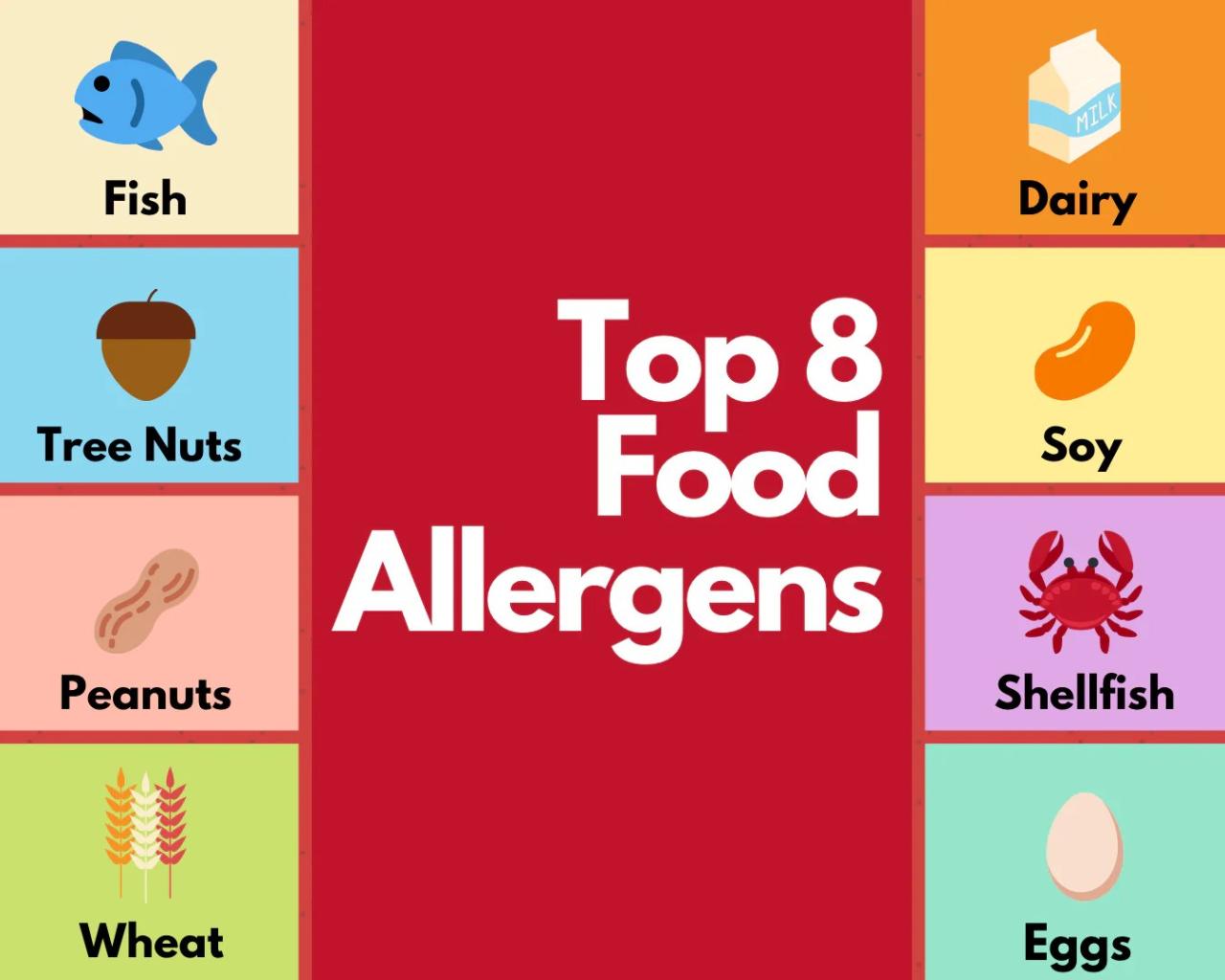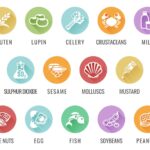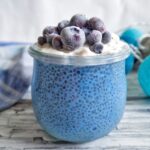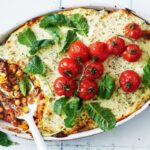Discover a world of culinary delight where deliciousness isn’t sacrificed for dietary needs! This guide explodes the myth that allergen-free cooking is bland, showcasing vibrant recipes bursting with flavor and texture. We’ll explore clever substitutions for common allergens like gluten, dairy, and nuts, transforming everyday dishes into exciting culinary adventures. Prepare to be amazed by the possibilities – allergen-free cooking is not a limitation, but a gateway to creative and satisfying meals.
From understanding basic allergen-free cooking techniques to mastering substitutions and tackling common challenges, this resource provides a comprehensive toolkit for anyone seeking delicious and inclusive meals. We’ll delve into the science behind flavor enhancement, offering tips and tricks to elevate your allergen-free cooking to a whole new level. Get ready to impress yourself and your guests with stunning, allergy-friendly creations that will redefine your expectations.
Allergen-Free Cooking Basics
Embark on a culinary journey where deliciousness isn’t confined by allergies! This isn’t about bland, restrictive eating; it’s about unlocking a world of vibrant flavors and textures, all while keeping common allergens at bay. Discover how simple substitutions can transform familiar dishes into allergen-friendly masterpieces, satisfying both your palate and your dietary needs. We’ll explore the common culprits and their equally delightful replacements, empowering you to create meals everyone can enjoy.
Allergen-free cooking requires understanding common allergens and finding suitable alternatives. The eight major allergens identified by the FDA are milk, eggs, peanuts, tree nuts, soy, wheat, fish, and shellfish. While eliminating these completely is crucial for those with severe allergies, understanding their roles in recipes is key to finding effective replacements. These replacements not only maintain the desired texture and structure but also contribute to a rich and satisfying flavor profile.
Common Allergens and Their Substitutes
A successful transition to allergen-free cooking relies on understanding suitable substitutes. The following table details common allergens and their effective replacements, considering both flavor and texture. Remember, the best substitute often depends on the specific recipe and your personal preferences. Experimentation is encouraged!
| Allergen | Replacement | Flavor Profile Comparison | Potential Texture Differences |
|---|---|---|---|
| Milk | Almond milk, soy milk (if not allergic), oat milk, coconut milk | Almond milk offers a subtly nutty flavor, soy milk is fairly neutral, oat milk is slightly sweet, and coconut milk adds a tropical sweetness. | Almond and oat milk can be slightly thinner than cow’s milk; coconut milk is thicker and creamier. |
| Eggs | Applesauce, mashed banana, flaxseed meal (mixed with water), chia seeds (mixed with water) | Applesauce adds a slight sweetness, banana adds sweetness and moisture, flax and chia seeds offer a slightly nutty taste. | Flax and chia seeds create a slightly gummy texture; applesauce and banana add moisture. |
| Wheat | Gluten-free flour blends (rice flour, almond flour, coconut flour), quinoa flour | Gluten-free flour blends can vary in flavor, some offering a slightly nutty taste. Quinoa flour has a slightly earthy flavor. | Gluten-free baked goods often have a slightly crumblier texture than those made with wheat flour. |
| Peanuts | Sunflower seeds, pumpkin seeds, tahini (sesame seed paste) | Sunflower and pumpkin seeds offer a mild, nutty flavor. Tahini has a rich, slightly bitter, nutty flavor. | The texture of seeds can vary depending on how they’re processed. Tahini is a paste. |
Recipe Showcase
This section presents three delicious and versatile allergen-free recipes, each designed to accommodate a specific dietary need. These recipes demonstrate that delicious food doesn’t have to compromise on flavor or texture simply because it avoids common allergens. Each dish offers a unique culinary experience, showcasing the potential of allergen-free cooking.
Gluten-Free Coconut Curry with Chickpeas and Sweet Potatoes
This vibrant and flavorful curry is naturally gluten-free, providing a hearty and satisfying meal. The creamy coconut milk base delivers a rich texture, while the sweet potatoes and chickpeas add heartiness and substance. Spices like turmeric and ginger contribute warmth and depth, creating a truly unforgettable flavor profile.
Ingredients: 1 large sweet potato, cubed; 1 can (15 ounces) chickpeas, drained and rinsed; 1 onion, chopped; 2 cloves garlic, minced; 1 inch ginger, grated; 1 tablespoon curry powder; 1/2 teaspoon turmeric; 1/4 teaspoon cumin; 1 can (13.5 ounces) full-fat coconut milk; 1 cup vegetable broth; Salt and pepper to taste; Fresh cilantro, chopped (for garnish); Coconut oil for cooking.
Instructions:
- Heat coconut oil in a large pot or Dutch oven over medium heat. Add onion and cook until softened, about 5 minutes.
- Stir in garlic and ginger and cook for 1 minute more.
- Add curry powder, turmeric, and cumin and cook for 30 seconds, stirring constantly, until fragrant.
- Add sweet potatoes, chickpeas, coconut milk, and vegetable broth. Bring to a simmer, then reduce heat and cook for 15-20 minutes, or until sweet potatoes are tender.
- Season with salt and pepper to taste. Garnish with fresh cilantro before serving.
Cooking Time: 30-35 minutes
Flavor Profile and Texture: This curry boasts a creamy, subtly sweet, and intensely flavorful profile. The sweet potatoes provide a soft, melt-in-your-mouth texture, complemented by the firm chickpeas and the fragrant spices. The coconut milk creates a luxuriously rich and satisfying mouthfeel.
Dairy-Free Creamy Tomato Soup
This vibrant soup is completely dairy-free, relying on cashew cream for its rich and decadent texture. The bright acidity of the tomatoes is balanced by the sweetness of roasted red peppers, creating a harmonious and comforting flavor profile.
Ingredients: 1 tablespoon olive oil; 1 onion, chopped; 2 cloves garlic, minced; 28 ounces canned crushed tomatoes; 1 roasted red pepper, chopped; 1 cup raw cashews, soaked in hot water for at least 30 minutes; 1 cup vegetable broth; 1 teaspoon dried oregano; Salt and pepper to taste.
Instructions:
- Heat olive oil in a large pot over medium heat. Add onion and cook until softened, about 5 minutes.
- Stir in garlic and cook for 1 minute more.
- Add crushed tomatoes, roasted red pepper, and oregano. Bring to a simmer and cook for 15 minutes.
- Drain the soaked cashews and blend them with vegetable broth until completely smooth.
- Add the cashew cream to the tomato mixture and stir well to combine. Season with salt and pepper to taste.
- Heat through and serve warm.
Cooking Time: 30 minutes
Flavor Profile and Texture: This soup is a delightful balance of sweet and tangy flavors. The roasted red pepper adds a touch of sweetness that complements the acidity of the tomatoes. The cashew cream creates a luxuriously smooth and creamy texture without any dairy.
Nut-Free Quinoa Salad with Roasted Vegetables
This vibrant and colorful salad is completely nut-free, offering a light and refreshing meal. The quinoa provides a hearty base, while the roasted vegetables offer a delightful array of textures and flavors. Sunflower seeds add a satisfying crunch, replacing the typical nut element.
Ingredients: 1 cup quinoa, rinsed; 2 cups vegetable broth; 1 zucchini, chopped; 1 red bell pepper, chopped; 1 yellow bell pepper, chopped; 1 red onion, chopped; 2 cups broccoli florets; 1/4 cup sunflower seeds; 2 tablespoons olive oil; 1 tablespoon lemon juice; Salt and pepper to taste; Fresh herbs (parsley, dill, or chives), chopped (optional).
Instructions:
- Preheat oven to 400°F (200°C). Toss zucchini, bell peppers, red onion, and broccoli with olive oil, salt, and pepper.
- Roast vegetables for 20-25 minutes, or until tender and slightly caramelized.
- While vegetables are roasting, cook quinoa according to package directions using vegetable broth.
- Once quinoa and vegetables are cooked, combine them in a large bowl. Stir in sunflower seeds, lemon juice, and fresh herbs (if using).
- Season with salt and pepper to taste.
Cooking Time: 40-45 minutes
Flavor Profile and Texture: This salad is a delightful mix of textures and flavors. The roasted vegetables offer a slightly sweet and smoky flavor, while the quinoa provides a hearty and slightly nutty base. The sunflower seeds add a pleasant crunch, and the lemon juice provides a bright and refreshing acidity.
Ingredient Spotlight

Mastering allergen-free cooking hinges on understanding and effectively utilizing substitute ingredients. This section delves into common allergen-free alternatives for staples like flour, milk, and eggs, comparing their properties and showcasing their application in various recipes. Choosing the right substitute depends on the desired texture and flavor profile of your final dish.
Flour Substitutions
Many gluten-free flours exist, each offering unique characteristics. Selecting the appropriate flour often involves balancing texture, moisture absorption, and overall taste. For instance, while almond flour creates a delicate crumb, it can dry out quickly if not properly managed.
| Flour Type | Properties | Advantages | Disadvantages | Recipe Examples |
|---|---|---|---|---|
| Almond Flour | Fine, slightly sweet, absorbs moisture quickly | Adds richness and subtle sweetness; good for cakes and cookies | Can dry out baked goods; not suitable for all recipes | Almond flour muffins, almond flour cookies |
| Coconut Flour | Very absorbent, adds a subtle coconut flavor | Good for adding moisture to recipes; creates a dense texture | Requires more liquid than other flours; can result in a slightly gritty texture | Coconut flour pancakes, coconut flour bread (often requires additional binding agents) |
| Rice Flour | Mild flavor, creates a light and fluffy texture | Versatile, works well in many recipes | Can be less structurally sound than wheat flour; may require additional binding agents | Rice flour cakes, rice flour noodles |
| Oat Flour (certified gluten-free) | Slightly sweet, adds moisture and binding | Adds a nice texture and flavor; relatively versatile | Can be grainy; ensure certified gluten-free for those with celiac disease | Oat flour cookies, oat flour pancakes |
Milk Substitutions
Dairy-free milk alternatives abound, each offering a distinct taste and texture. Soy milk, for example, tends to have a slightly beany flavor, while almond milk is often milder and nuttier. The choice depends on personal preference and the recipe’s requirements.
| Milk Substitute | Properties | Advantages | Disadvantages | Recipe Examples |
|---|---|---|---|---|
| Almond Milk | Nutty flavor, relatively low in calories | Mild flavor, versatile; good for baking and drinking | Can separate in some recipes; may not be as creamy as dairy milk | Almond milk lattes, smoothies, baking recipes (often requires additional emulsifiers) |
| Soy Milk | Slightly beany flavor, high in protein | Good source of protein; works well in savory and sweet dishes | Can have a strong flavor; may not be suitable for all palates | Soy milk smoothies, baking recipes (can be a good substitute for dairy milk in some cases) |
| Oat Milk | Creamy texture, slightly sweet flavor | Good for baking and drinking; creamy texture | Can be less stable than other milk alternatives; may not be suitable for all recipes | Oat milk lattes, smoothies, baking recipes |
| Coconut Milk | Rich, creamy texture, distinct coconut flavor | Adds richness and creaminess; suitable for curries and desserts | Strong coconut flavor; not suitable for all recipes | Curries, desserts, smoothies |
Egg Substitutions
Eggs play a crucial role in baking, acting as binders and leavening agents. Finding the right replacement requires considering the egg’s specific function in the recipe. Flax eggs, for instance, work well as binders but may not provide the same leavening power as eggs.
| Egg Substitute | Properties | Advantages | Disadvantages | Recipe Examples |
|---|---|---|---|---|
| Flax Egg (1 tbsp flaxseed meal + 3 tbsp water) | Acts as a binder | Easy to make; good for binding ingredients | Doesn’t provide leavening; may alter texture slightly | Vegan cookies, muffins |
| Chia Egg (1 tbsp chia seeds + 3 tbsp water) | Acts as a binder | Similar to flax egg; good for binding ingredients | Doesn’t provide leavening; may alter texture slightly | Vegan breads, pancakes |
| Applesauce | Adds moisture and sweetness | Good for moistening baked goods; adds sweetness | May alter the taste and texture significantly | Cakes, muffins |
| Mashed Banana | Adds moisture and sweetness | Good for moistening baked goods; adds sweetness | May alter the taste and texture significantly; best for recipes where banana flavor is complementary | Cakes, muffins, quick breads |
Embarking on an allergen-free culinary journey doesn’t mean compromising on taste or satisfaction. This guide has unveiled the secrets to creating flavorful and exciting meals free from common allergens. By understanding substitutions, mastering techniques, and embracing creative flavor combinations, you can confidently craft delicious dishes that cater to diverse dietary needs. So, ditch the preconceived notions of bland allergen-free food and unlock a world of culinary possibilities – your taste buds will thank you!
Clarifying Questions
Can I freeze allergen-free dishes?
Yes, many allergen-free dishes freeze well. Consider the ingredients and their freezing properties. Properly storing them in airtight containers is crucial for maintaining quality and preventing freezer burn.
Are all allergen-free products certified?
No, not all allergen-free products are certified. Always check ingredient labels carefully, paying attention to potential cross-contamination warnings. Look for certifications from reputable organizations if you have severe allergies.
How do I avoid cross-contamination when cooking allergen-free?
Thorough cleaning of surfaces and utensils is paramount. Use separate cutting boards, cookware, and utensils for allergen-free foods. Be mindful of airborne allergens during preparation, particularly flour.


